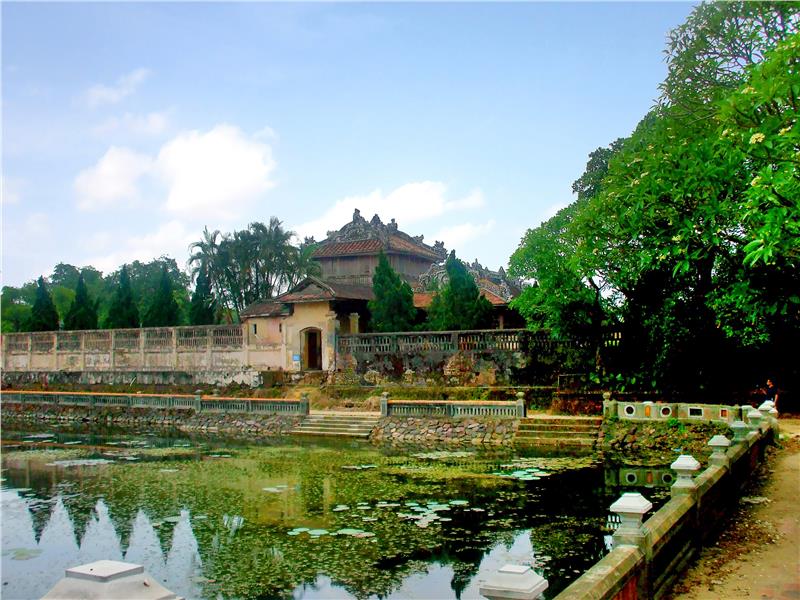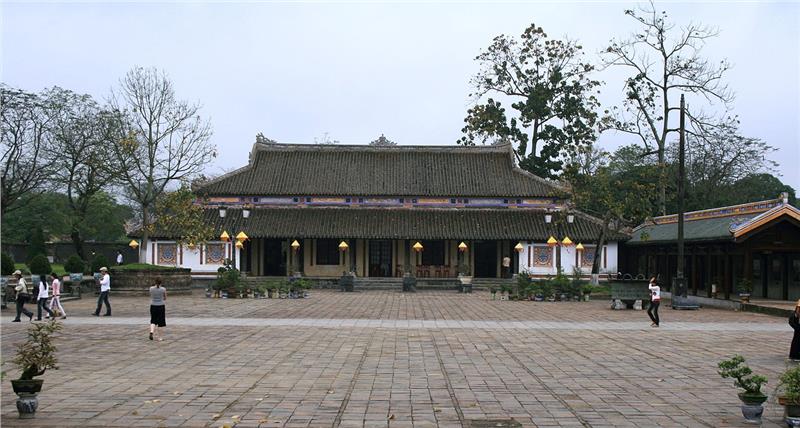After four years of restoration, Royal Library in Hue Citadel (or Thai Binh Lau) was open to serve visitors from March 26. The Royal Library is located in the northeast of Forbidden Citadel. It is a wooden monument built under the order of Khai Dinh Emperor in 1919. The construction of Royal Library finished in 1921. From 1990 to 1991, the monument was restored. The second restoration took place for four years from 2011 to 2014 with the captial of 24 billion dong. On the occasion, Hue Monuments Conservation Center organized a photo exhibition with the theme of "Revival of Hue heritages" at Truong Lang Dai Cung Mon, next to the Royal Library with more than 100 documentary photos. The event of reopening Thai Binh Lau to serve tourists contributes to the preservation and promulgation of the outstanding World Cultural Heritage – one of the most famous attractions in Hue.

The architecture of Emperor’s Reading Room is a double works with a large lobby. The ground is 1 meter higher with four pillars in front. On the facade, three words in Chinese characters mean Thai Binh Lau or Royal Library (Emperor’s Reading Room) with two poems of Khai Dinh Emperor on two sides. After the lobby is the main area. It is a two-floor house of 9.55 meters with yin-yang tiled roof, beautiful and splendid decorations. The third area has three parts. The area is also designed similarly to that of the previous area. Overall, the most striking feature in the royal library is the art of gardens and mosaic porcelain. Relics of Hue Citadel are historical and cultural monuments constructed under the order of Nguyen Dynasties from the early 19th century to the first half of the 20th century in Hue. Almost of the sites are now under the Hue Monuments Conservation Center. They are recognized by UNESCO as World Cultural Heritage on December 11, 1993. Currently, the ancient capital of Hue was named the ranking list of 62 particularly important national monuments. Hue Citadel can be divided into ensembles of Citadel's outer and inner.

Forbidden Citadel belongs to Hue Imperial City. It is the center of daily routines of emperors and lords of Nguyen Dynasty. Forbidden City is the third "layer" of Hue Citadel. It is the working areas, accommodation and daily activities of kings and royal families. Forbidden City is located behind Thai Hoa Palace. The area was built under the power of the third Gia Long Emperor. In the third Minh Mang Emperor, Forbidden City was renamed as Forbidden Purple City. According to the meaning of Chinese characters, Forbidden Purple City is the living place of the King, there is no appearance of ordinary people. In Forbidden Purple City, there are about 50 architectural works with various scales divided into many areas. The number of these works fluctuates through the historical periods.
In addition to major works arranged in a line behind Grand Palace Gate, Forbidden City has palaces and pavilions as dining and entertaining areas of kings and lords: Thuong Thien Duong, Thai Y Vien, Duyet Thi Duong, Thieu Phuong Garden, Ngu Yen Garden, Dong Cac Pavilion, Tu Khue, Quang Minh Palace, Trinh Minh Palace, Thuan Huy, and Duyet Thi areas... Also, there are a number of different architectures for spiritual beliefs such as Buddhist temples, shrines worshiping the Sun and stars.